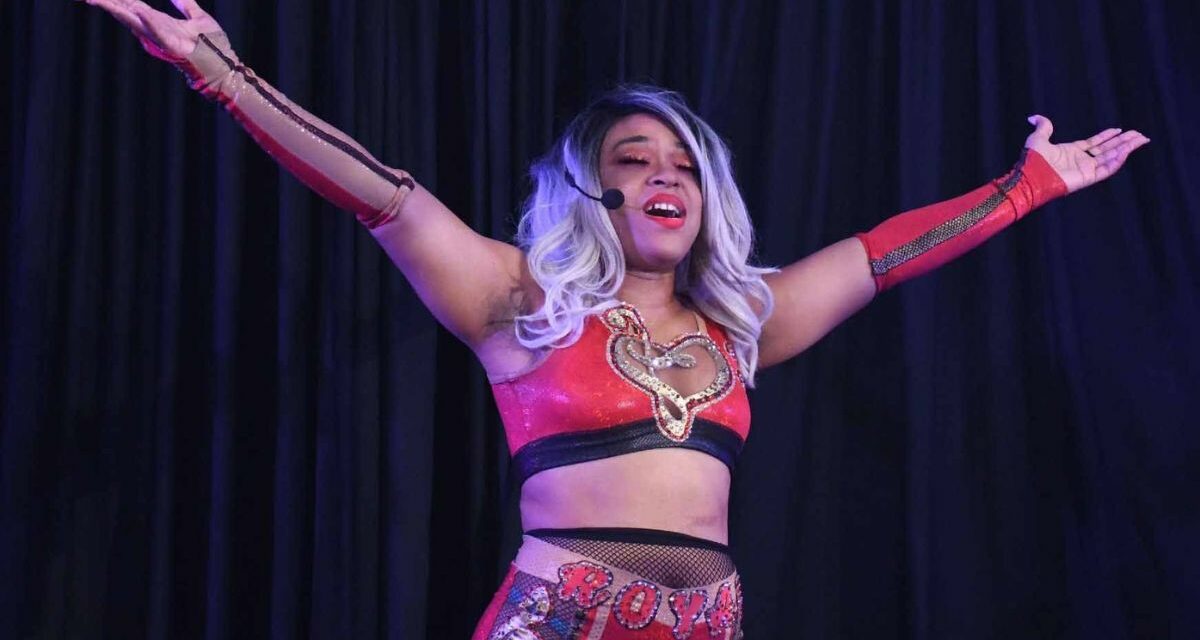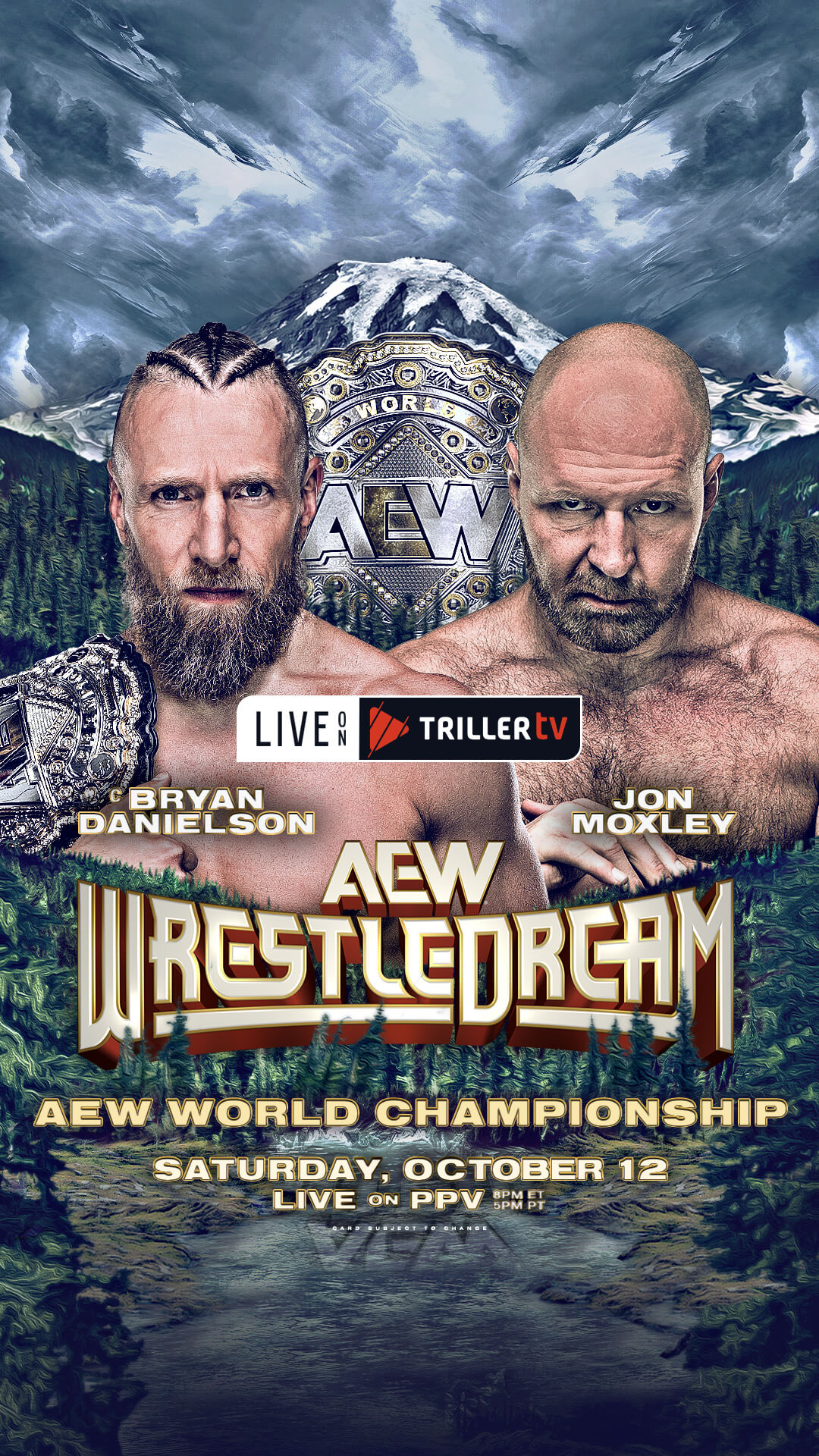Shalandra Royal was in middle school when a teacher named Mystee Blankenship first told her that her singing voice was different. Naturally, being a young teen full of self doubt, she wasn’t sure how to take the news.
“What do you mean it’s different?” she asked.
“It’s very mature,” Ms. Blankenship said. “You have very mature vibrato.”
Shalandra didn’t have a clue what any of that meant. “She told me, ‘Just listen to me. I got you.’ So I did.”
If only Ms. Blankenship (who is now Mrs. Wilcox) knew where that special voice would take her young student. If only she knew she’d play a small part in creating a future OVW Women’s Champion, a singing siren of the ring known as Shaloncé Royal.
Before she was even born, Shalandra Royal’s parents made sure music was a part of their baby girl’s life. “My mom had one of those giant headphones you put over your belly. She played a lot of Journey and Foreigner, which is probably why I have a weird attraction to ’80s music.”
Shalandra started singing at an early age. She joined choir in elementary school and sang a lot in the Pentecostal church where she was raised. She loved listening to Japanese artists lime Nami Tamaki and T.M. Revolution as well as American artists like Vanessa Carlton.
“I had a pretty plain voice back then,” she says. “I liked singing Vanessa Carlton’s ‘A Thousand Miles’ and other songs like that.”
While she loved singing and spent hours honing her craft in the car and in the shower, she never thought of her voice as being special. Her primary interest in middle school was sports, and when she joined choir, she did so by accident. That’s when Ms. Blankenship singled her out.
Shalandra had often sung her favorite American and Japanese pop songs for talent shows and been well received. When Ms. Blankenship’s directed her toward singing classical songs, she discovered that natural vibrato.
“She told me to pursue classical music and think about singing opera, and she started showing me songs I should try,” says Shalandra. “Then I found out I could get paid to go to college if I sang opera, and I said, ‘Oh bet, I can do that!’”
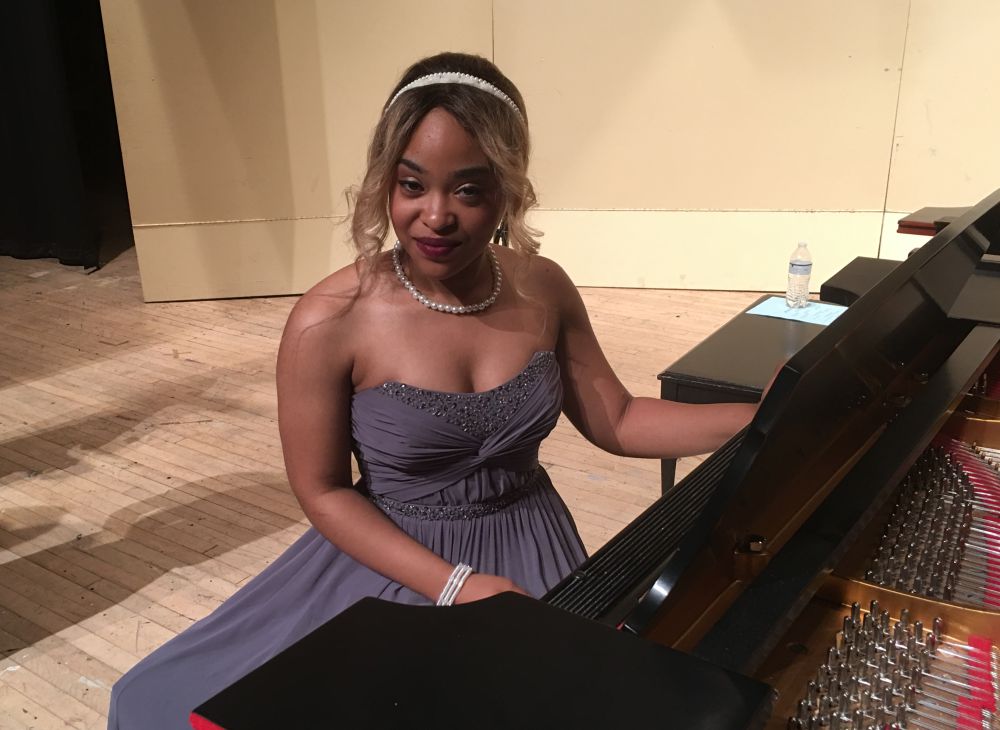
Shalandra Royal after a masterclass performance in Porter Auditorium at Wesleyan College. Photo courtesy of Shalandra Royal.
Shalandra worked hard on her voice, not only pushing the range of her singing voice but her natural speaking voice as well. “My normal speaking voice is higher pitched. I wanted to be a mezzo soprano, so when I heard that lowering my speaking voice would help me expand my vocal range, I started working on it. Not only did I expand my vocal range, I started to notice people paid more attention when I spoke in a lower register.”
The hard work paid off. Her operatic voice earned Shalandra a scholarship to college, where she received her first formal training in music. She often found herself working on arias that belonged to supporting roles because they fit her vocal range best. “I learned a lot of arias sung by ‘the maid’ in different operas, but I enjoyed those parts. The maid isn’t a lead, but always knows everything that’s going on. That’s a fun part to play.”
Had Shalandra stuck only to music and opera, this would not be a story for SlamWrestling, but as regular viewers of Ohio Valley Wrestling know all too well, Shaloncé Royal now shared her talents weekly at Davis Arena in Louisville. Sure, the fans will tell you they hate her voice. They’ll tell you she stinks and they really wish she’d simply shut up, but the diva with dynamic range has become a force to be reckoned with in the ring.
Wrestling didn’t enter Shalandra’s life as early as music, but she caught her first glimpse of it in elementary school when her dad turned on an episode of Smackdown. “I remember seeing some of the ladies fighting over the Diva’s belt. I can’t remember who I saw, but I was enthralled by it. I said, ‘I can do that. I’m gonna do that one day.’ Then I forgot about it for a very long time.”
Living in a low-income household, Shalandra didn’t get to watch a lot of wrestling growing up. Then during middle school, the family got the WWE video game Raw vs. Smackdown on PSP, and she found that spark again. “I fell in love with customizing characters, the entrances, the glitz and glam of it, but I didn’t understand wrestling. Later on, I discovered the story mode while playing the game on Playstation and started to get it.”
Fast forward to college. Shalandra met a boy and got engaged, but as she describes it, the relationship was trying hard to end itself. “We were looking for things to do together to try and make it work. He suggested I come to judo and Jiu jitsu with him. I don’t know if he was saying it because he didn’t think I’d go, but I proved him wrong.”
Shalandra didn’t know anything about judo or Jiu jitsu, but because she wanted to make things work, she tried it. “I fell in love with it! That’s when I learned about Ronda Rousey and MMA, and I wanted to try it.”
Her path toward MMA took a strange turn after a friend saw her commenting about the sport on social media. He reached out and invited her to try backyard wrestling. “I was struggling to get through college at the time, so I promised him I’d try it as soon as I finished college. I kept my promise! I had broken up with my fiancé by then and thought wrestling would give me a chance to get back into shape. They also had a well-established YouTube channel, and I thought, maybe someone will see what I can do.”
Shalandra dove head-first into wrestling, studying as much video as she could. “The first match I remember watching was Asuka versus Ember Moon at NXT. It was night and day from the matches I knew from the video games that included bra and panties matches. Here were these two girls who didn’t look like the Divas I watched as a kid having a match that was every bit as good as the guys’ matches. I knew this was what I wanted to do.”
Her interest in learning more and training led to an invitation to One Fall Power Factory in Georgia, now known as Nightmare Factory, where she began training with QT Marshall and Glacier.
“When we first met, she had been training with a bunch of backyard, self-trained wrestlers,” says Marshall. “While she always seemed to be OK with the physicality of wrestling, she just had to figure out what everything was all about. She always worked hard and was not afraid of the physicality.”
“She’s Aces in my book,” says Glacier (Ray Lloyd). “She’s a genuinely good person, and she sacrificed a lot to train with us. Her mom was going through health issues for a time, and she still drove three hours one way to and from the school to train with us on the north side of Atlanta.”
Her time at Nightmare Factory only increased Shalandra’s love for pro wrestling. She started to see the possibilities of actually making money at pro wrestling, and she pursued wrestling as hard as she ever did music.
It was while she was training at Nightmare Factory that an incredible opportunity presented itself. Cody Rhodes had teamed up with The Young Bucks to put on the biggest independent wrestling show of all time, and event they were calling All In. “Cody had mentioned needing someone to sing the national anthem,” says Marshall, who immediately thought of Shalandra. “I thought she was perfect for this. I made her film, a video, singing, the national anthem, and then I sent it to Cody. We ended up giving her this opportunity after she won a competition from the school that was labeled the American Dream Scholarship.”
“Cody likes story,” says Shalandra. “He liked that I was an opera singer and could have gone back to school for that, but instead, I wanted to be a pro wrestler.”
On September 1, 2018, at the Sears Center in Chicago, Illinois, Shalandra Royal became the first woman to appear on stage at All In. “It wasn’t my best rendition of the national anthem, and I really wish I could do it over just to show people that I can sing, but people liked it. We were all there to go all in, the fans and the wrestlers, and they popped for it. I probably could have sung ‘Mary Had a Little Lamb,’ and they would have popped. That’s just the atmosphere we had that night.”
After the success of All In, Cody Rhodes and The Young Bucks teamed up with Tony Khan to form All Elite Wrestling. AEW started airing weekly shows on YouTube, AEW Dark, along with its flagship program Dynamite airing Wednesday nights on cable. Shalandra appeared on AEW Dark episode six. She had her own theme song with Shazza McKenzie. She competed in a women’s battle royal and was the first person eliminated.
“I felt like, ‘Oh my gosh, this is it,’” she says. “Then it was nothing.”
Shalandra’s feelings were hurt when AEW stopped calling, but she now sees that she just wasn’t as ready for the big time as she thought. “When I go back and look at those old matches, I had good basics, but I didn’t stand out. I’m only five feet tall, and back then, I was just Generic Wrestler 185. People were like, ‘She’s cute, she sells well,’ but she doesn’t stand out.”
By the year 2020, when the COVID-19 pandemic struck, Shalandra knew she had a decision to make. She could go back to corporate America, or she could go balls to the wall with professional wrestling.
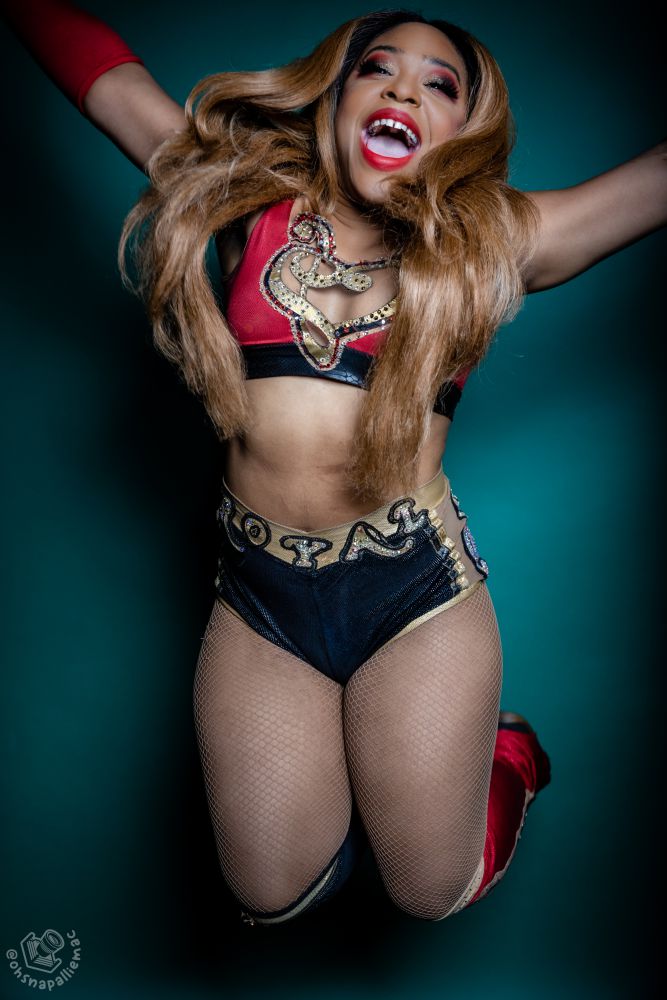
Photo by Allie Mac. @ohsnapalliemac on Instagram.
“I had already turned down a full-ride scholarship to grad school for wrestling,” says Shalandra. “I decided that I would give wrestling a try, and if I didn’t make it, I would at least know I gave it everything I had.”
Her renewed sense of purpose led to a number of changes, not the least of which was her name. Shalandra had picked up a nickname a few years earlier during a trip to South Korea that fit the bill perfectly.
“I was kind of a broken person when I went to South Korea,” says Shalandra, who traveled to Korea all alone to study abroad. “I kept getting back together and breaking up with my ex-fiancé, and everyone thought I was going to fall apart because he was no longer in my life. I knew I was a strong person, and I knew South Korea would help me prove I was right.”
The trip affirmed everything Shalandra was feeling, restoring her self-confidence. She found validation in the new friends she made, and while she’d never partied much in college, she embraced the night life of South Korea.
“South Korea was the first time I ever had honey blonde hair,” recalls Shalandra. “They were letting me in clubs for free and giving me drinks for free. My friend Patrick Miller started saying, ‘Make way for Shaloncé!’ Hey was the first person to call me by that name. Shaloncé became my alter ego, this persona I put on when we went to the clubs.”
When she returned to wrestling in Georgia during the pandemic, Shalandra shared her experience of becoming Shaloncé with fellow wrestlers Eric Silva and Austin Towers. “I told them that the best I ever felt was when I was in South Korea. It made me want to quit wrestling and go back to South Korea. They asked me what was different, and I told them about Shaloncé. Austin said, ‘You need to be Shaloncé here. Be Shaloncé in the ring. If you want to sing or whatever, do it, but be Shaloncé.’”
The name wasn’t the only change Shaloncé made when she got back to wrestling. “I started singing and making noise. I started to gain traction. Some people loved me, some hated me. But they all saw me, and they were all talking about me.”
“You have to find a way to be unique,” says Glacier. “You have to find a way to stand out so people will pay to see you.”
It’s no surprise singing proved to be the thing that made people pay more attention to Shaloncé Royal. All her life, she had struggled to be heard. “I’m naturally soft-spoken. Before I worked on my speaking voice, people would always talk over me and ignore me. When I sing, they pay attention. And when I sing opera, people have no choice but to hear me. Singing helped me be heard.”
“She has a level of confidence about her voice I don’t think she even knew she had,” says Glacier, who witnessed her transformation first-hand. “I told her she needed to find the same level of confidence with wrestling as she has with singing. That comes from working hard, keeping a good attitude, putting the reps in, and not getting bitter when things don’t go your way.”
Shaloncé is hardly the first person to become a professional wrestler after first singing opera. Gloria Barratini left the stage for the ring when she joined up with Billy Wolfe’s girl wrestling group back in the late 1940s. And Canadian-born wrestler Tony Parisi used to dress up in a tuxedo and sing opera to the crowd to get some heel heat. That same strategy has turned Shaloncé into a lightning rod, a wrestler fans either love or love to hate. The vast majority fall into the latter category.
“She’s a natural heel,” says Glacier. “There’s no one else I’ve ever known in wrestling who has a voice like she has. I always tell students, everyone hates arrogance. If you have a natural gift, like Shaloncé does, be your own biggest fan. Be as arrogant as you can be about it, and people will hate you for it.”
“Her character is amazing,” says Maria James, who coaches Shaloncé at Ohio Valley Wrestling. “Being a trained opera singer just brought it all together. Once she started incorporating that into her character work, there was no limit to her potential.”
Shaloncé got word about Ohio Valley Wrestling at a Belladonna Wrestling show. “I didn’t know anything about OVW before I went, but I got Maria James’ name, contacted her, and she told me to come on up.”
It wasn’t a difficult decision for Maria to make. “Shaloncé is a Nightmare Factory girl. From watching her work I knew she would be a good fit for OVW.”
What impressed Shaloncé most when she arrived was the history of the place, a history she herself had never heard. “I saw the photos of all the women on the wall backstage, women I watched and admired, and I got a little choked up knowing this was where they trained.”
Under the guidance of Al Snow, Maria James, and Doug Basham, Shaloncé learned how to work TV and how to handle herself backstage, learning the unspoken rules of locker room etiquette. The company also gave her a place to experiment and try new things. “I’ve been able to explore many facets of my character. They let me push it. They let me screw up. They let me push the boundaries of my singing. When I go too far, they let me know, but they continue to let me try new things and just be me. It’s definitely a good place to learn to be a superstar.”
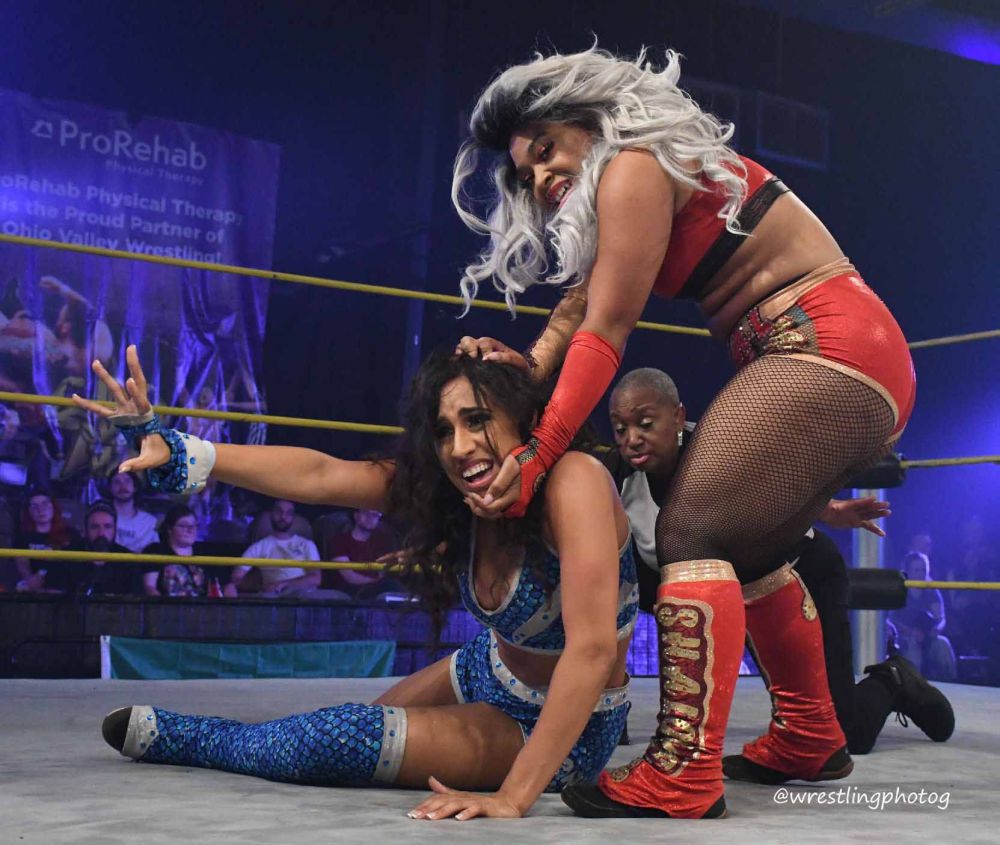
Shaloncé vs. Tiffany Nieves in OVW. Photo by Pamela Barnett
Singing has become more and more a part of Shaloncé’s in-ring character. She sings her way to the ring, belting out the high notes in her entrance theme, and she sings constantly while doing battle with her opponents. If she isn’t feeling heard, she frequently snatches a microphone from OVW ring announcers Linda Kay and Eric Cornish to make sure everyone hears her. Fans are often challenged to boo and jeer loud enough to drown out her powerful vocals.
Adding music to her character’s repertoire allowed Shaloncé to embrace another long-time hallmark of OVW alumni: “Work smarter, not harder.” Make no mistake, Shaloncé has a quiver full of wrestling moves, but much like John Cena, whom detractors often criticized for his “five moves of death,” she knows she can entertain just as much with her voice as with her actions.
“A lot of people say I spend more time singing than I do wrestling,” says Shaloncé. “Well yeah. I have a gimmick. I sing. I don’t have to wrestle as much because of that gimmick. But the people still come to see me.”
Management at OVW clearly sees her worth as a wrestling star. On October 29, 2022, Shaloncé defeated OVW and AEW star Leila Gray to win the OVW Women’s Championship for the first time. The honor of carrying the standard for the OVW women’s division means one thing more than anything else to her: visibility.
“For a while, I thought people didn’t see me,” says Shaloncé. “I felt like I was just some girl who got booked so they could have a women’s match or because they had another girl and wanted me to make her look good. I would to the promoters and ask them what they wanted and if we could try something, and they’d blow me off saying, ‘This is just a one time match.’ I know a lot of girls feel that same way.
“Winning the OVW Women’s title shows people I’m someone worth investing in. It shows me that (OVW) knows I can work, that I have a good gimmick, and they’re willing to invest in me to make me a superstar. They see me, and that means the world to me.”
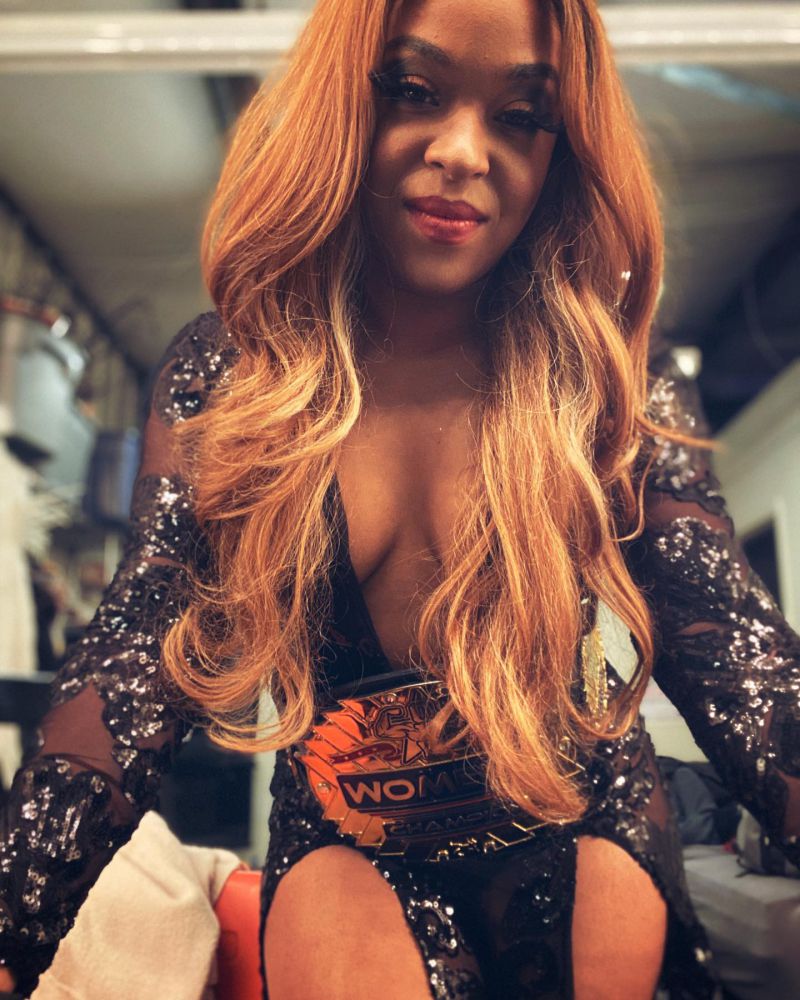
Shaloncé with the OWV Women’s title.
OVW’s leader Al Snow gives Shaloncé a strong vote of confidence: “Shaloncé’s star is definitely on the rise. She is not only a very capable wrestler and athlete but has charisma and is a talented operatic singer as well, making her a potent force in sport’s entertainment and pro wrestling.”
“I see a huge amount of potential in Shaloncé,” adds Maria James. “She’s been an amazing champion, and she keeps killing it week after week. I would like to see her on AEW more as well as get a shot in WOW.”
Shaloncé has worked with a number of favorite opponents. “I love working with Mazzerati Lazarus, Kamille Brickhouse, Kiera Hogan, Haley J, and Leila Gray. I’ve never faced Nyla Rose one on one, but we’ve had some tags, and I’m dying for another rematch. Robin Renegade is great because she hits hard and likes you to hit her back. Joey Mayberry is fun, and he really knows how to work a crowd. Vicky Dreamboat is new on the scene, but she has one of the best wrestling spirits, especially in the locker room. She’s a just great person. I’ve also had two great matches with Red Velvet. She was my first match back at AEW, and she helped me to show people how my character has changed.”
As far as dream matches, Shaloncé’s wish list changes day by day. “Mercedes Mone would be great. Charlotte Flair would be a dream. Mickie James, because I always stole her moves when making my own character on Raw Vs. Smackdown. Athena and Asuka, because of the match I watched when I started training, and of course, Saraya.”
Fans will soon get to see Shaloncé on a reboot of the reality TV competition Whacked Out hosted by Jessie Godderz. The “Face That Runs The Place” was asked by producers to pick a few OVW Superstars to help him co-host a few episodes. He chose The Outrunners and Shaloncé.
“It was great working on the set,” says Shaloncé, “The cast was amazing and encouraging, and Jessie is very professional! He takes pride in everything he does. He cares about what he puts his name on, and he puts in the work to make sure what he he works on is the best version of what it can be.”
“The Fighting Siren” Shaloncé would love to sign with a major wrestling company, but in the changing landscape of professional wrestling, she’d be just as happy building a bigger name for herself so she could live off wrestling for a while. She’s not done with music either, and she’s open to touring, collaborating, and any other opportunities to come her way. She really hopes to give back one day, creating scholarships and helping other kids who came from under-privileged backgrounds like hers to follow their musical dreams.
“I wouldn’t be where I am today if people had not stuck their neck out and invested in me,” she says. “I want to pay it forward and help other kids to feel seen and heard.”
Marshall believes his student has huge potential. “I think her and her persona can take her as far as she would like to go! Professional wrestling is an extremely fair industry. If you work really hard, treat people right and do your best to never take no as an answer.”
“If she does get that a chance to get a run at the top, I feel like she will give back,” says Glacier. “She’s a genuinely good person, and I believe she’ll make the most of it without letting it go to her head.”
If opera comes calling, Shaloncé definitely had a few dream roles in mind. “I always wanted to play Carmen! There’s something about the tone of her voice and the sensuality of the character. I’d also love to play the lead in Aida. The opera world is, unfortunately, one that often passes over people who don’t look like they fit the part. It’s become more accepting, but because Aida is Egyptian, it’s a role someone of color could easily play.”
Shaloncé also has her eyes on one of the most challenging arias ever written, a piece composed by Mozart for The Magic Flute. “I also want to do ‘The Queen of the Night’ aria, and I will do that one before I die!”
As much she’d love to be back on stage, embraced by the cheers of opera lovers, Shaloncé is reveling in the platform professional wrestling has given her. The more they boo, the louder she sings. Like it or not, the fans see her now, and they definitely hear her.
TOP PHOTO: Shaloncé Royal sings her heart out. Photo by Pamela Barnett
RELATED LINKS
